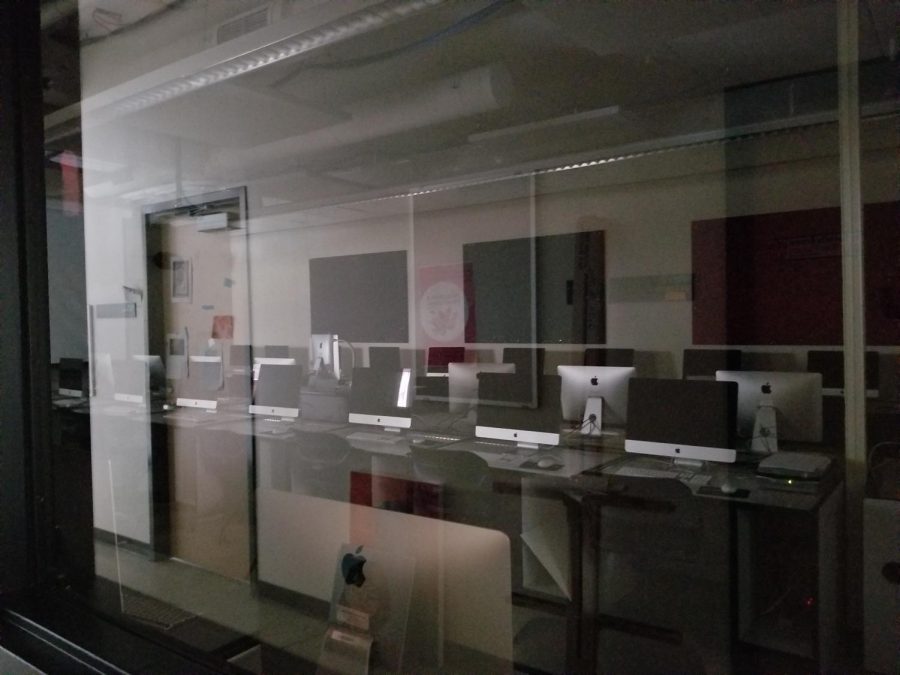Dance professor, theatre student discuss online learning
Mar 30, 2020
With ongoing COVID-19 precautions, departments at Grand Valley State University face the need to adapt to online courses. Even music and theatre, fields dependent on face-to-face interactions, are accommodating social distancing.
Dance professor Carrie Morris said the performing arts should be included in any undergraduate study, for the programs contribute to society in meaningful ways. Many students who go through the dance program at GVSU become performers, teachers and choreographers.
However, some students enter other fields, including biology and nursing. For instance, dance movement therapy addresses mental health where people dance to help process events in their lives. Morris said dance experiences change students’ understanding of the human body and human connection.
Morris said some dance courses are technique classes. Ranging from Modern Technique to Jazz Technique, these classes usually meet two or three days each week. Other classes are more academic. Instead of a studio, Dance History is taught in a classroom.
Some dance classes involve academics and practice, particularly the choreography class. Here, students handle readings and create their own dances. Morris mentioned Freshman Company and Dance Company are performance classes since faculty and guest stars design choreography for students to perform at dance concerts.
Amidst COVID-19, Morris said she supports the precautions for online learning and social distancing. After all, dance involves much face-to-face and body-to-body contact. Nonetheless, the online shift poses challenges for dance faculty and students.
“One of the important things that is coming out of it is that dance is a very social field,” Morris said.
Morris said she thinks students have felt disconnected and isolated from recent changes. However, she utilizes synchronous teaching for Modern Technique by doing dance exercises with students via Zoom. This allows students to see each other and move together in their own spaces while helping with their physical, mental and emotional health.
Morris said the biggest challenge in adapting her online classes is considering the amount of space students have. Her dance students usually practice within a large studio. Doing dance sessions online, though, requires some creative modifying of more limited space. Some dance classes involve doing a ballet barre while holding on to such areas as a kitchen counter for support.
Furthermore, Morris said she cannot see as clearly what students are doing. She removed some dance moves from the curriculum, so students are not harmed from jumping and other risky actions.
Beyond dance, theatre is also adjusting to the online format with some difference from the face-to-face experience. Marcus Chapman, a theatre student, is taking Advanced Directing this semester.
Advanced Directing is a studio class. Although the class discusses material from a textbook, much of the learning experience is hands-on. Students bring in actors and direct each other in plays. Chapman said Advanced Directing was scheduled to practice three ten-minute plays.
With the shift to online learning, though, he mentioned the class shifted to producing a prompt book. One step is the script analysis. Chapman said if the playwright did not include a location while a character mentioned Seattle, then one would decide whether the location is Seattle. Additionally, the analysis would extend to how Seattle relates to a character’s background.
Beyond the script analysis, Chapman said research is conducted on the playwright and past productions of the play. For example, what did critics say about the play? From there, the director takes the script analysis and research to establish the directorial concept.
Chapman said the directorial concept is where directors find a core theme to link scenes together. For instance, he directed Almost, Maine as ten scenes not directly related to each other. However, Chapman connected those scenes through the theme of love and humanity.
The directorial concept extends to expressing the central theme in words to designers. Chapman said for Almost, Maine, he instructed the lightning director to reflect the Northern Lights during moments of enhanced love and human connection. Additionally, he told the costume designer he wanted the characters to look like real people from a small town.
Much more goes into making a prompt book, yet Chapman said the experience is still worthwhile. Nonetheless, he mentioned enjoying working with actors, an experience limited by online classes.
“Trying to break down somebody’s character without having somebody to interact with, I feel like I’m not doing the character as much justice,” Chapman said.























